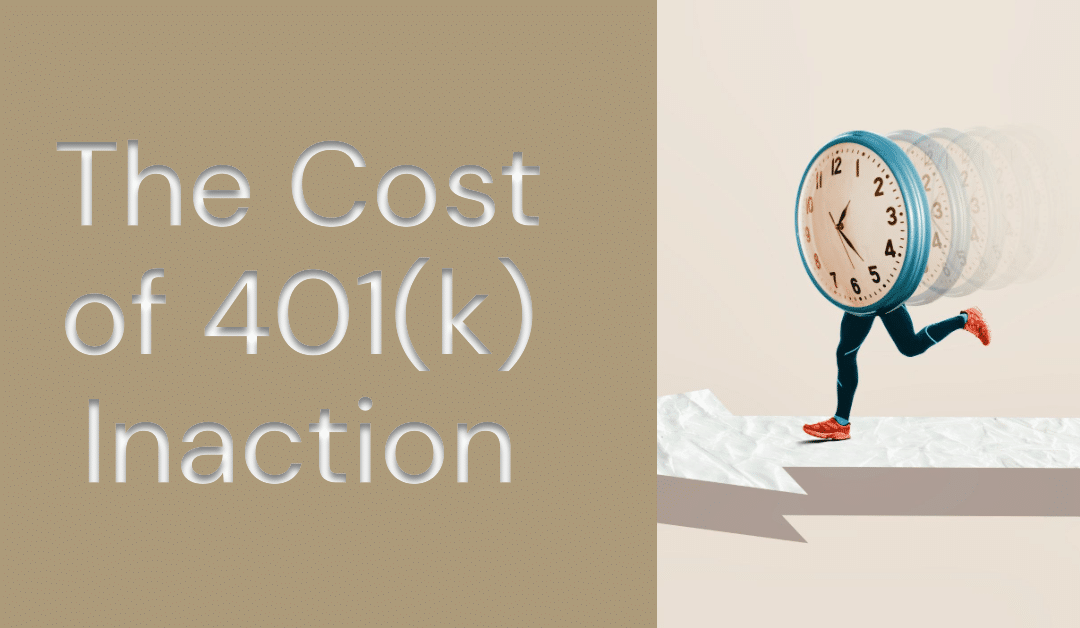The cost of inaction can do great harm to a 401(k). The required investment management decisions are opportunity costs. The core of these decisions are annual fees and maximized investment performance.
Mutual fund selection in your company 401(k) account is always a concern. What happens when you fail to take action to resolve it?
Here is an example. I was speaking with an individual 401(k) participant at a large law firm recently. I helped calculate the cost of inaction on a single mutual fund selection on the 401(k) menu.
This firm’s default 401(k) menu included twenty mutual fund options. Long ago, this individual picked four mutual funds to own.
Here is the primary 401(k) investment management challenge. You are working long hours and struggling to find a balance between work and personal life. Your 401(k) account continues to grow.
All of a sudden, economic conditions change. Interest rates rise. Stock markets fall. You cannot find the time to analyze the changes in your 401(k) mutual fund allocation. Even if you did have time, where would you find the information to improve your 401(k) mutual fund choices?
The easiest thing to do is to do nothing. It does not look like you have a company 401(k) mutual fund selection problem. So, you do not look for a better solution.
A review of his current 401(k) mutual fund holdings showed a huge “cost of the problem.”
This individual owned four 401(k) mutual funds. Three of them were the most expensive and lowest-performing mutual funds available.
We talked about what it might take to solve this problem. Through discussions, we produced a great game plan. Sell the three expensive and lagging mutual funds.
Take the proceeds and reinvest in the top three ranked mutual funds on the default 401(k) mutual fund menu.
The individual 401(k) participant balked at the idea. How did I know the lagging mutual fund he currently owned would not “catch up” in the future?
The answer was that I did not know. I did know that past investment performance was terrible. This individual owned the wrong mutual funds on the default 401(k) menu.
The cost of inaction is also the cost of “doing nothing.” This investment management strategy falls into the same category as “buy and hold.” Or more “buy and hope.”
There are investment performance costs of not owning the best 401(k) mutual fund available to you. An independent, third-party analysis of your current 401(k) mutual funds is the only way to know.
How much money does it cost for you to continue to own the handful of mutual funds in your company 401(k) account?
Ric Lager
Lager & Company, Inc.
I have spent the last several years trying to figure out the best way to share my 401(k) advice content. I have tried Twitter, Facebook, company web site, and LinkedIn Groups. I now realize nothing beats a well-crafted newsletter delivered to your inbox once a week.
Sign-up here.

